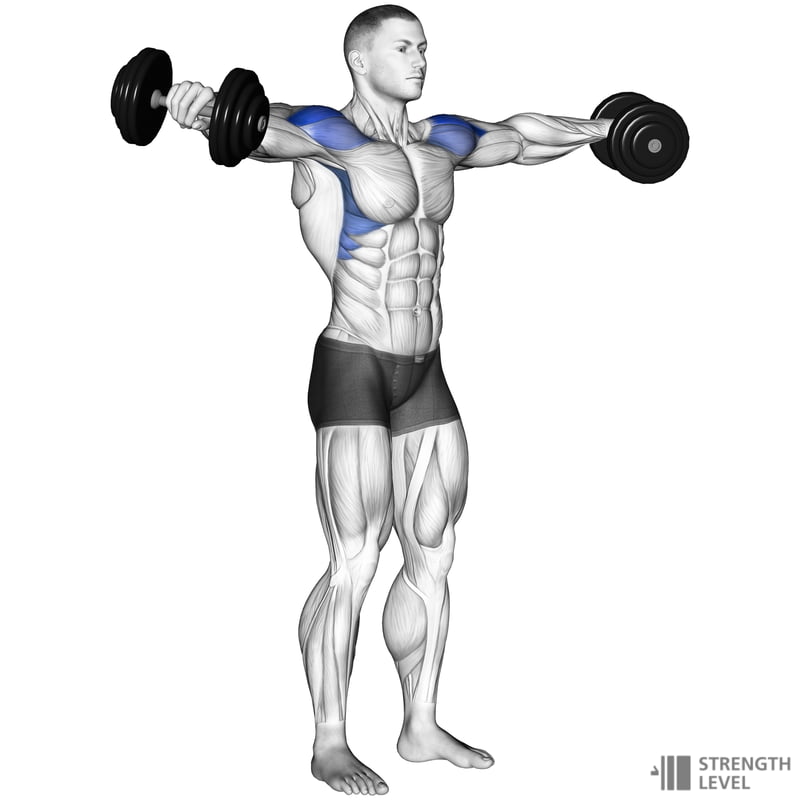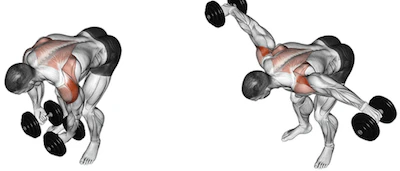
How to Pump Up Your Deltoids: A Comprehensive Guide
The deltoid muscles, commonly known as the delts, are crucial for achieving a well-rounded and muscular upper body. Strong deltoids not only enhance your shoulder width and overall physique but also contribute significantly to upper body strength and stability. Pumping up your delts involves a combination of targeted exercises, proper form, and consistency. Here’s a detailed guide on how to build impressive deltoids.
1. Understanding Deltoid Muscles
The deltoid muscle consists of three distinct heads:
- Anterior Deltoid (Front): Located at the front of the shoulder, responsible for lifting the arm forward.
- Lateral Deltoid (Side): Located on the side of the shoulder, responsible for lifting the arm to the side.
- Posterior Deltoid (Rear): Located at the back of the shoulder, responsible for lifting the arm backward.
2. Effective Deltoid Exercises
To develop strong and defined deltoids, incorporate a variety of exercises that target each head of the deltoid muscle. Here are some of the best exercises:
a. Overhead Press
- How to Do: Stand with your feet shoulder-width apart and hold a barbell or dumbbells at shoulder height. Press the weight overhead until your arms are fully extended. Lower the weight back to the starting position.
- Benefits: Engages all three heads of the deltoid muscle, with a focus on the anterior and lateral deltoids.

b. Lateral Raises
- How to Do: Stand with a dumbbell in each hand, arms at your sides. Lift the dumbbells out to the sides until they reach shoulder height. Lower the weights back down slowly.
- Benefits: Specifically targets the lateral deltoids for a wider shoulder appearance.

c. Front Raises
- How to Do: Stand with a dumbbell in each hand, arms at your sides. Lift the dumbbells in front of you until they reach shoulder height. Lower the weights back down slowly.
- Benefits: Focuses on the anterior deltoids.

d. Rear Delt Flyes
- How to Do: Bend at the hips with a slight bend in your knees and hold a dumbbell in each hand. With your arms slightly bent, lift the weights out to the sides until they are in line with your shoulders. Lower the weights back down slowly.
- Benefits: Targets the posterior deltoids.

e. Arnold Press
- How to Do: Sit or stand with a dumbbell in each hand, palms facing you at shoulder height. As you press the weights overhead, rotate your palms to face forward. Lower the weights back to the starting position with palms facing you.
- Benefits: Engages all three deltoid heads and adds variety to your shoulder workout.

3. Proper Technique and Tips
To maximize effectiveness and prevent injury, focus on proper technique:
- Controlled Movements: Perform exercises with controlled, deliberate movements.
- Full Range of Motion: Ensure you’re fully extending and contracting your deltoids with each rep.
- Avoid Cheating: Maintain good posture and avoid using momentum to lift the weights.
- Mind-Muscle Connection: Concentrate on feeling your deltoids work during each exercise.
4. Progressive Overload
To achieve continuous muscle growth, progressively increase the demands on your muscles:
- Increase Weights: Gradually lift heavier weights as your strength improves.
- Increase Reps and Sets: Add more repetitions or sets to your routine.
- Vary Exercises: Change your exercises periodically to target your muscles differently and prevent plateaus.
5. Nutrition for Muscle Growth
Proper nutrition is essential for building muscle:
- Protein Intake: Ensure you’re consuming enough protein to support muscle repair and growth. Aim for 1.2 to 2.2 grams of protein per kilogram of body weight.
- Balanced Diet: Include a mix of carbohydrates, healthy fats, and plenty of fruits and vegetables.
- Stay Hydrated: Drink plenty of water to support overall health and muscle function.
6. Consistency and Recovery
Building impressive deltoids requires consistency and adequate recovery:
- Regular Workouts: Aim to train your deltoids at least twice a week, allowing for sufficient rest between sessions.
- Rest and Recovery: Give your muscles time to recover by getting enough sleep and taking rest days as needed.
- Stretching and Warm-Up: Always warm up before workouts and stretch afterward to prevent injury and improve flexibility.
Conclusion
Achieving well-defined and powerful deltoids takes dedication, proper technique, and a balanced approach to fitness and nutrition. By incorporating effective exercises, maintaining a healthy diet, and staying consistent with your workouts, you can develop the strong, sculpted shoulders you desire. Remember, progress takes time, so be patient and stay committed to your fitness journey.
